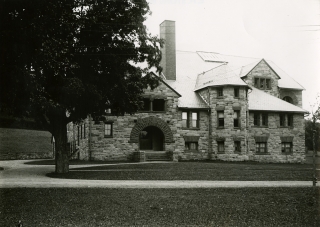1891 to succeed Dr. Beebee as Professor of Homiletics. An alumnus of Hamilton College, he had been minister at churches in Waterford and Newburgh. Dr. George R. Berry came in 1896 from the University of Chicago, where he had received his Ph.D., to teach the Semitic languages. In 1897 Dr. Edward Judson, who had been a member of the faculty as a Latin and modern language professor (1867-74), relieved Dr. Jones of pastoral theology which he had taught in addition to homiletics following Dr. Harvey’s death in 1893. Judson came to the campus on a part-time basis since he continued to hold the pastorate of the large Judson Memorial Baptist Church in New York.
Morale in the Seminary faculty and to some extent among teachers in the College and Academy suffered in the nineties because of the dismissal of Professor Nathaniel Schmidt. It occurred against the background of theological controversy in the United States brought about by the application of higher criticism in Biblical studies as expounded by German scholars. Among the Baptists, the new scientific and literary analysis of the Scriptures made headway in the 1880’s and, like the Presbyterians and Congregationalists, they found it necessary to remove at least two professors from theological seminaries for their unorthodox teachings.
The difficulty at Colgate comes as a surprise, however, when one remembers Dr. Dodge’s liberal views and Dr. Clarke’s progressive theology. Had there been a strong man of Dodge’s stripe in the presidency to give forceful leadership, it might not have arisen. Schmidt had been one of the President’s favorite students and freely acknowledged his mentor’s emancipating influence. In 1891 at the age of twenty-nine and after only three years of teaching he was made Professor of Semitic Languages and Literature, in view of the Trustees’ appreciation of his “marked attainments”
as a scholar, linguist, and teacher. He was an editor, also, having induced his associates to establish in 1892 the Seminary Journal, a ten-page quarterly, which he directed for its one-year existence; it carried scholarly articles and book reviews and kept alumni in touch with the Seminary.
Word had spread abroad, meanwhile, that Professor Schmidt denied the divine inspiration and “inerrancy”
of the Bible. This was a serious charge when leveled against a seminary professor because he was in a strategic position for corrupting the denomination’s theology at its source. Dr. Hinton S. Loyd, Executive Secretary of the Education





